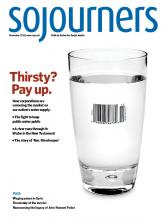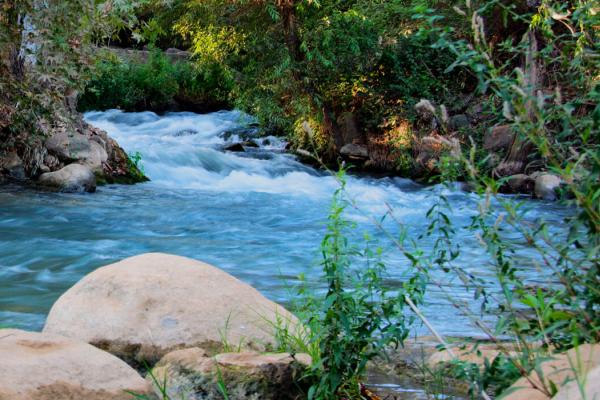"HOW DID THIS HAPPEN?" pondered the middle-aged woman as she panted up the road to her village of Sychar, water jar forgotten. “How did we get into this heavy theological conversation from a simple request for a drink of water? Sometimes conversations take sharp turns, but this is just too bizarre. I’ve known a number of men in my life, but only the crazy ones told me they were the messiah! Better check this out with the town elders.”
In contrast to the approximately 800 references to water in the Hebrew Bible, the New Testament is relatively spare. A friend explained the difference. The ancient Hebrews emerged from the eastern desert cultures of Egypt and Babylonia (now Iraq), which built their empires around rivers and where water was scarce and precious. But the New Testament writers were oriented toward the wetter West, where seafaring Greeks and Romans had appropriated the Mediterranean Sea as their major mode of transportation and conquest. For example, even though the book of Acts only mentions the word “water” in reference to baptism, the early missionary movement depended on travel by ship to spread the gospel message.
Water in the synoptic gospels
All four gospels introduce us to John the Baptist down by the Jordan River, who dunks in its flowing water those who repent from sin as a symbol of their cleansing. After John moves offstage, the synoptic gospels center much of Jesus’ activity in the towns around the Sea of Galilee. Here he not only teaches from a boat (Matthew 13:2; Luke 5:3), but he and his disciples travel in it from one side of the lake to the other, which includes a miraculous walk on and rebuking of the stormy waves (Matthew 14:22-27; Mark 6:47-52; Luke 8:22-25). Other references to water are few and sometimes incidental.
Read the Full Article

